You can easily find items you want by doing a quick search. You can browse by categorized subject, grade, month, organization, or miscellaneous items. The search button enables you to locate items related to a specific topic or keyword. The search can be sorted a-z, z-a, or with newer products first. Many items have been created by the website developer and veteran teacher, Lynda Ackert. Other resources were offered on loan or by donation from specific vendors granting members permission to access their particular products.
Materials Available
- Complete Curricula
- Worksheets
- Workbooks
- Notebooking Sheets
- Lapbooks
- Unit Studies
- Graphic Organizers and Templates
- Flashcards
- Games
- Science Experiment Forms
- Certificates
- Homeschool Planning Forms
- Parent Forms
- Out-of-Print Books
I used this homeschool resource with Alyssa (Age 8) who works at a 3rd-5th grade level approximately 3-5 times per week. I obtained the resources on my MAC computer using Safari as my preferred browser. After logging in, I browsed the many resources offered. We explored the resources and I found several items of interest. We decided to pick-and-choose items to complete based on Alyssa's interests, abilities, and subjects learned. She also worked on several items a day when lessons were short. In August, I slowly added back one subject at a time using the CHSH-Teach.com worksheets as a review. Let me tell you about a few of our favorite selections. As you read through my review, please click on he pictures to enlarge.
Picture Book Units
One product I utilized first were the 8-page picture book units suitable for children in 1st-3rd grade. I wanted to keep things simple this summer, so I allowed my daughter to chose any book unit of interest as long as we owned the book. I wanted to use the units to motivate her to read more, reduce summer learning loss, and possibly help keep us on track with school. The resources were formatted exactly the same with colorful cover pages using eye-catching photographs of the book covers. Each unit consisted of contextual vocabulary found within the reading comprehension questions and two journal pages. The Table of Contents described the types of pages and their use. We really liked the fact that before, during, and after questions were offered. She worked on predictions, connections, and questioning skills. These book units were done together. I also alternated the picture book units with the chapter book units so that we could cover more book units during the review period.
The first book unit she chose was Jumanji. She placed her worksheets on a clipboard with a pencil nearby. First, we discussed the pre-reading questions before reading the book aloud. She also made predictions about the story based on the cover. Then, as I read aloud the book we paused to verbally discuss and answer reading comprehension questions which often reflected on vocabulary words within the context of the story. She wrote her responses before moving on so that she wouldn't forget them. I told Alyssa that good readers ask questions while they read. I modeled how to use questioning while reading a story. She shared the questions she formulated during and after the reading. She verbally answered the AFTER reading questions about the plot. One unique aspect of the book unit was the observation of the art or illustrator's craft. My daughter's favorite part were the journal pages, because they involved drawing. She usually chose the journal page allowing her to draw in her own style. We even watched the movie during a play date after reading the book. I was pretty lenient when using these worksheets over the summer. I encouraged complete sentences but didn't require them.

Chapter Book Literature Units
Ralph S. Mouse and the Whipping Boy were the first two chapter book units we completed. These are suitable for children working at a 4th-8th grade level. We will begin a new chapter book soon. Alyssa will choose the book this time based on the available units.
Ralph S. Mouse written by Beverly Cleary was an enjoyable book for my daughter to read. After reading the first chapter, she said the book was kind of boring which surprised me. She gave the book a second shot and was hooked into the story. The materials related to this unit were easy to use. I appreciated how the reading comprehension questions covered one chapter at a time. Factual and reflective questions were given. There were 4-7 questions per chapter enabled her to dig deep into the story. The answers were given for individuals who prefer using them. I always asked Alyssa to mark where she found the answers to the questions in the margins. This unit even included an awesome word search. I am a huge fan of graphic organizer usage when teaching reading strategies and skills. I believe if used correctly they can improve critical and analytical thinking skills. The picture below shows a Venn diagram to compare and contrast the two characters, Ryan and Brad. After reading Alyssa paragraph contrasting and comparing the two boys, I learned that we needed to focus on paragraph formation using a topic and closing sentence again. The vocabulary was used in the context of the story using fill-in-the-blank sentences making the terms more meaningful. Six extended book activities were provided. Alyssa chose 1-2 book extensions to complete, but she had to make sure we had all the supplies needed before starting the project. One of her book projects at the end was to compare and contrast the movie to the book. We found an animated You Tube movie for her to watch online.
The most recent chapter book unit we completed was about the Whipping Boy. We have plans to revisit the Whipping Boy book so we didn't complete the extended projects this time. She listed a few that she wanted to do later. My daughter did enjoy the challenge of the analogies after learning new vocabulary. She looked each vocabulary word up in the dictionary which strengthened her dictionary skills and expanded her vocabulary knowledge. She read and chose the correct definition based on the context of the story. Younger children could benefit from having multiple choice definitions (2-3 choices). It was a lot of writing in one day. I quickly realized that the reading assignment length was too long when paired with vocabulary work. I divide the reading and vocabulary over a 2-day period. Furthermore, I had a hard time dividing up the chapters. I didn't know which vocabulary words and reading comprehension questions were from which chapters. I wish that the chapters were indicated on the answer sheet in the margin area.
Character Trait Study With Literature Connections
The Learning About Character Traits Study contains a book list of literature connections, but ANY book or character can be used for each unit. The author, Lynda Ackert, offers 2-3 books for each character trait unit. She also provided a suggested weekly use plan covering one unit a week with teacher tips. Each week follows the same format. The term, character trait, is clearly defined within the pages of the resource. The PDF book covered 40 character traits which are listed in the Table of Contents. Three pages are dedicated to each trait. The set included an eye-catching colorful trait definition poster to display, a character trait analysis graphic organizer, and a simple literature connection sheet. We read the book titled, Owl Babies, when learning about exhibiting the Anxious character trait. When discussing the Demanding character trait, we read a book called If You Give a Pig a Pancake.
First, we read the book together snuggled on the couch. Even though my daughter is almost 9 and can read independently, one of her favorite together activities is for me to read aloud books. I also wanted to spend more time reading to her so this resource helped me improve that goal. Then, we completed the character trait analysis sheet. This sheet frequently addressed text-to-self connections. My daughter reread the book independently before completing the literature connection sheet. She used post-its to mark the book pages for information needed in the graphic organizer as the Words, Thoughts, Feelings, and Actions related to the trait exhibited.
Topical Math Worksheet Packets
All of the Math worksheets were utilized to review previously learned skills. She was at her father's for over a month in the summer and I was afraid that she would forget difficult Math concepts. She really needed a solid foundation of basic Math concepts before beginning her advanced Math curriculum. She did need to brush up on a few skills, but luckily she had truly mastered many concepts. Check out a few Math concepts we reviewed below. The first book unit she chose was Jumanji. She placed her worksheets on a clipboard with a pencil nearby. First, we discussed the pre-reading questions before reading the book aloud. She also made predictions about the story based on the cover. Then, as I read aloud the book we paused to verbally discuss and answer reading comprehension questions which often reflected on vocabulary words within the context of the story. She wrote her responses before moving on so that she wouldn't forget them. I told Alyssa that good readers ask questions while they read. I modeled how to use questioning while reading a story. She shared the questions she formulated during and after the reading. She verbally answered the AFTER reading questions about the plot. One unique aspect of the book unit was the observation of the art or illustrator's craft. My daughter's favorite part were the journal pages, because they involved drawing. She usually chose the journal page allowing her to draw in her own style. We even watched the movie during a play date after reading the book. I was pretty lenient when using these worksheets over the summer. I encouraged complete sentences but didn't require them.

The Make Way for Ducklings was another fun book unit we utilized during the review period. The book is a classic picture book. The book unit format helped create a familiar routine. Alyssa knew what was expected and was ready to work. She responded to reading comprehension questions in written format and the journal pages tapped into her creative side putting those drawing skills to work.
We recently completed the Black and White book unit which was an interesting book. My daughter's journal page drawings were exceptional from this book unit. Her favorite scene was clearly depicted. We were impressed with the style and artwork of this book.
Ralph S. Mouse and the Whipping Boy were the first two chapter book units we completed. These are suitable for children working at a 4th-8th grade level. We will begin a new chapter book soon. Alyssa will choose the book this time based on the available units.
Ralph S. Mouse written by Beverly Cleary was an enjoyable book for my daughter to read. After reading the first chapter, she said the book was kind of boring which surprised me. She gave the book a second shot and was hooked into the story. The materials related to this unit were easy to use. I appreciated how the reading comprehension questions covered one chapter at a time. Factual and reflective questions were given. There were 4-7 questions per chapter enabled her to dig deep into the story. The answers were given for individuals who prefer using them. I always asked Alyssa to mark where she found the answers to the questions in the margins. This unit even included an awesome word search. I am a huge fan of graphic organizer usage when teaching reading strategies and skills. I believe if used correctly they can improve critical and analytical thinking skills. The picture below shows a Venn diagram to compare and contrast the two characters, Ryan and Brad. After reading Alyssa paragraph contrasting and comparing the two boys, I learned that we needed to focus on paragraph formation using a topic and closing sentence again. The vocabulary was used in the context of the story using fill-in-the-blank sentences making the terms more meaningful. Six extended book activities were provided. Alyssa chose 1-2 book extensions to complete, but she had to make sure we had all the supplies needed before starting the project. One of her book projects at the end was to compare and contrast the movie to the book. We found an animated You Tube movie for her to watch online.
The most recent chapter book unit we completed was about the Whipping Boy. We have plans to revisit the Whipping Boy book so we didn't complete the extended projects this time. She listed a few that she wanted to do later. My daughter did enjoy the challenge of the analogies after learning new vocabulary. She looked each vocabulary word up in the dictionary which strengthened her dictionary skills and expanded her vocabulary knowledge. She read and chose the correct definition based on the context of the story. Younger children could benefit from having multiple choice definitions (2-3 choices). It was a lot of writing in one day. I quickly realized that the reading assignment length was too long when paired with vocabulary work. I divide the reading and vocabulary over a 2-day period. Furthermore, I had a hard time dividing up the chapters. I didn't know which vocabulary words and reading comprehension questions were from which chapters. I wish that the chapters were indicated on the answer sheet in the margin area.
 |
| Reading and Vocabulary Work |
 |
| Reading Comprehension Questions and Answer Key |
 |
| Analogies |
The Learning About Character Traits Study contains a book list of literature connections, but ANY book or character can be used for each unit. The author, Lynda Ackert, offers 2-3 books for each character trait unit. She also provided a suggested weekly use plan covering one unit a week with teacher tips. Each week follows the same format. The term, character trait, is clearly defined within the pages of the resource. The PDF book covered 40 character traits which are listed in the Table of Contents. Three pages are dedicated to each trait. The set included an eye-catching colorful trait definition poster to display, a character trait analysis graphic organizer, and a simple literature connection sheet. We read the book titled, Owl Babies, when learning about exhibiting the Anxious character trait. When discussing the Demanding character trait, we read a book called If You Give a Pig a Pancake.
First, we read the book together snuggled on the couch. Even though my daughter is almost 9 and can read independently, one of her favorite together activities is for me to read aloud books. I also wanted to spend more time reading to her so this resource helped me improve that goal. Then, we completed the character trait analysis sheet. This sheet frequently addressed text-to-self connections. My daughter reread the book independently before completing the literature connection sheet. She used post-its to mark the book pages for information needed in the graphic organizer as the Words, Thoughts, Feelings, and Actions related to the trait exhibited.
Fractions
Adding and Subtracting Mixed Fractions is a gigantic 232-page resource choked full of practice worksheets suitable for 4th-6th grade students. The packet covered a variety of fraction skills related to addition and subtraction. Mixed and improper fractions are addressed. Word problems, regrouping, and least common multiple (LCM) are just a few of the topics reviewed. In the beginning a visual model is shown with an informative teaching blurb to review. The lesson become more complex and progressively more difficult over time.
 |
| Subtracting Fractions with Regrouping |
Working with Fractions
This workbook resource contained 222 pages of worksheets in color for children in 2nd-4th grade. She completed a few basic worksheets asking her to name and identify fractions. Answer keys were also provided. There are several other fraction resources available.
We will definitely continue using the fraction worksheets until her core Math curriculum arrives which should be soon. These resources have been extremely helpful during this transition.
Roman Numerals
The 41-page Working With Roman Numerals resource served as an excellent review. I did a quick mini-lesson and read aloud the Roman Numeral rules. We displayed the Roman Numeral poster for a few days while she reviewed material using the worksheets. She never really looked at the poster after the first day. We didn't print out the entire unit, because she was familiar with the concept. I chose several pages based on what she had been previously taught. The answer keys were in a vertical list format for this packet. A crossword puzzle was available to challenge your puzzle loving student.
Learning to Check Division Problems is a 22-page resource reminding children how to check their division work and the importance of checking work. You'll always know if a division problem is correct or not if you check your work. A decent amount of space to show work is given if your child can write small enough. The final answers are written on the side which makes checking work a breeze.
This was a unique worksheet approach. Alyssa had to check the division problems using multiplication. Then, she had to decide whether the given answer was correct or incorrect. She's always been required to check her own work using multiplication, but she was never given the answers first. Some answers included remainders. She said she felt like a teacher grading a paper, but that it was neat activity. Answer keys were provided. The answer keys are a must for me when it comes to checking Math work, because it simplifies everything.
She also worked from another 76-page division packet titled, 3-Digit Dividends With and Without Remainders. There were too many problems on one sheet so I ended up slitting it up over several days. She also worked the problems on a separate sheet of paper so she could have more room to write.
Math Games
One engaging 3-page game we enjoyed playing together was Multiplication Turtle Tic Tac Toe. We used centimeter blocks as markers and printed the game board twice. She wanted to play this game over and over again to review. Basically, you roll the dice and multiply the two factors or numbers to get a product. If that product (answer) is on your card, then you can cover the number. We took turns rolling the dice. The first person to cover 5 numbers in a row wins the game. The colorful game board and adorable turtle character appealed to my daughter. I believe these features made her more interested in the game. This game covers single digit multiplication up to 6x6=36.
Geography
The Daily Geography is a 36-week resource suitable for children in 3rd-5th grade. The book contains 157 pages. The first page of each weekly assignment contains information about a topic to be discussed together. This is just a short blurb which makes maintaining the child's attention easier. The answer key and vocabulary are also provided on that same page for easy teacher reference. The answer key indicated the answers for each daily assignment.
The daily assignments are in bold print and indicated across a 2-page spread. A map or coordinating activity sheet is frequently included as a tool for answering questions. There is a Glossary at the back of the book. Furthermore, a Geography Glossary binder cover and a My Glossary page enabling users to list and define new related words is offered. I absolutely LOVE Daily Geography. I've been looking for a Geography supplement that is quick and simple to use. I wanted it to address topics not mentioned thoroughly in her core curriculum. The text font and size are easy to read. We will definitely continue using this resource!
Grammar
I found a 41-page Sentence Types workbook which covered the four different types of sentences: Declarative, Imperative, Exclamatory, and Imperative. It was the perfect back-to-school review supplement to use before beginning our new Grammar curricula. The workbook pages emphasized a learn, practice, and test approach. Answer keys were provided with answers indicated in a bold red color.
First, I used the poster to discuss the sentence types in sets of two. She didn't need to do the complete packet so I didn't print the entire book. I carefully selected and printed off several of the worksheets covering the skills I needed to address. She completed exercises relate to the two sentence types. As I added in a new sentence type, the worksheets she used became more cumulative. She worked through several pages to review the concept until she felt confident that she mastered it. Then, I printed a test for her to complete in order for me to assess her level of understanding. Once she made a 100% we moved to a new topic. I displayed the posters on the wall after she studied them. They will later be added to her Language Arts binder. We now use the formal names for the types of sentences as we work through her Grammar curriculum book.
The calendar and record keeping documentation forms were helpful to our homeschool. I printed several specific forms for my personal binder. I may or may not keep up with the binder as the busy year progresses, but at least these forms are ready for the school year. I like that I can customize my homeschool planner using the forms I want or need. As you can already see I haven't started using several of the forms yet. I am still in prep mode.
Attendance Form
The horizontal attendance form is in chart or table format listing the numbered days across the top and the months vertically on the left side. At the end of each month, there is space to write the number of days taught and the number of days year-to-date. We aren't required to track attendance in Texas, but I am curious how many days we thane school so I'd like to track it this year. I also wanted to have it on record just in case it was needed in the future. I later added a notation system at the bottom of the page including marks such as A=Absent, P= Present, H=Holiday, W=Weekend, etc. Then, I highlighted the days as I counted them for each month.
Extra-Curricular Log for Field Trips, Concerts, Plays, and Sports
A space is given to write the name and location of the event in addition to the date, type of activity, and the class or significance. I am hoping we'll attempt more field trips this year with the local homeschool community. I often forget places we visited as the year progresses so this record sheet will remind me.
Volunteering and Community Service Log
There is a place to indicate my daughter's name, grade, and year. The form gives space to indicate the place, your role in serving, the time, and the date. My daughter made a goal of helping the community twice a month. This form will help her track her activities.
Daily Grade Log (monthly)
Each column is titled with a subject such as Language Arts, Math, Social Studies, and Science. You fill-in who the grade log is for in addition to the month and year. I immediately realized that I needed a blank form which enables me to write my own subjects. I like to split up Language Arts. I am not sure if or how long I will use this form, but I am going to attempt using it this year.
Reading Log
She used the Reading log to track some of the books she read. I want her to be more consistent with recording them this year so this was a practice run for us.
Other Items of Interest
- Human Anatomy and Audubon Bird Coloring Book
- Cursive ASL Handwriting
- U.S. President Timelines, Fact Cards, and Color Pages
- Full Spanish Curriculum
- Sermon Notes for Kids
- Indicate which items are available for a limited time on temporary loan.
- Create more Math games addressing advanced Math concepts.
- Add more Elementary U.S. History materials.
- Add more easy to find picture books to the Character Study even though a book list was provided.
- Thoroughly check the website for necessary updates. Some materials weren't accessible all the time.
- Attention is needed for minor glitches in the website. For example, needing to log in again immediately after logging in.
- Offer more picture book and chapter units with cumulative assessments - include a series of historical fiction.
- Break up longer worksheets into smaller chunks for younger readers. For example, the Whipping Boy format seemed overwhelming to both of us. I would cover only 1-2 chapters and organize it like the Ralph S. Mouse unit. Another option would be to mark vocabulary and questions with chapter indicators making it easier for parents or educators to create a more manageable work load for the needs of their particular children.
Annual Subscription $25
Lifetime Subscription $99.99
The price is worth it when you consider all the resources available at your fingertips for a year. Not to mention, the website will continue to grow, because the owner constantly adds updates and new material. The more I explore the website, the more resources I find to use.
Don't forget to sign-up for the newsletter freebies! After adding your e-mail address, you'll start receiving 2-4 FREE downloads per week. You can keep the ones you like or delete those you aren't interested in using.
Recommendations
I recommend the CHSH Download Club from CHSH-Teach.com as a valuable resource for homeschool families looking for an fantastic supplement to their core curriculum. A vast assortment of products covering many subjects are available with additional resources constantly added to the collection. This would be an exceptional resource for families with children across several grade levels, because one membership gives you access to materials for all your children.
Social Media
Google+
Google Business Page
Linked-In
Tumblr
Don't forget to read about my fellow crew reviewers' experiences with CHSH-Teach.com at the Schoolhouse Review Crew blog.


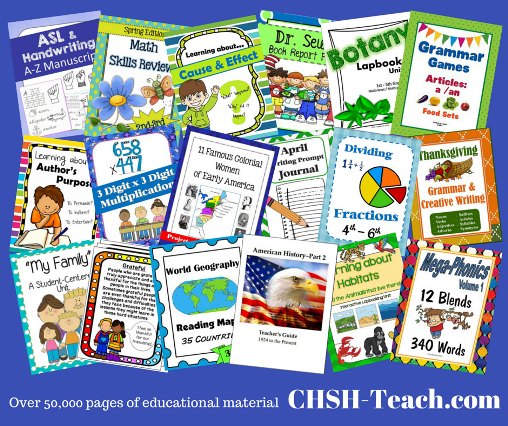













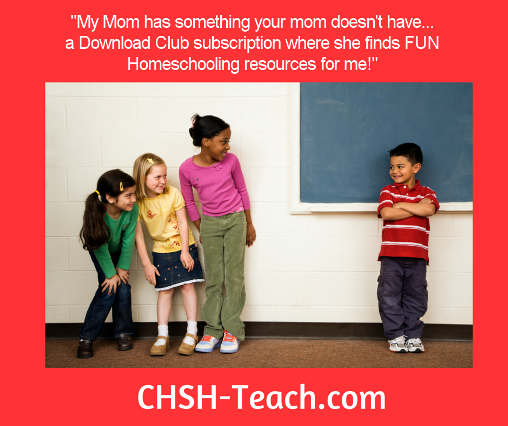



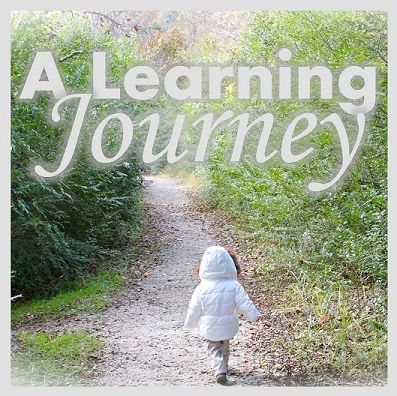







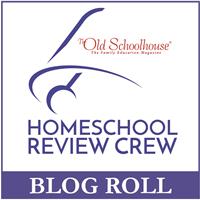






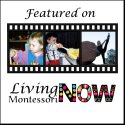
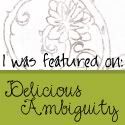
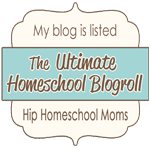




No comments:
Post a Comment